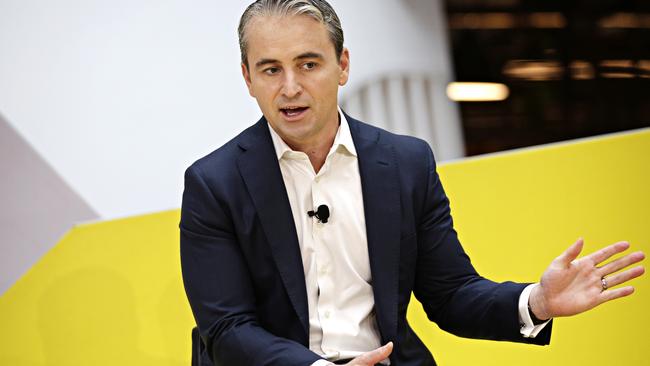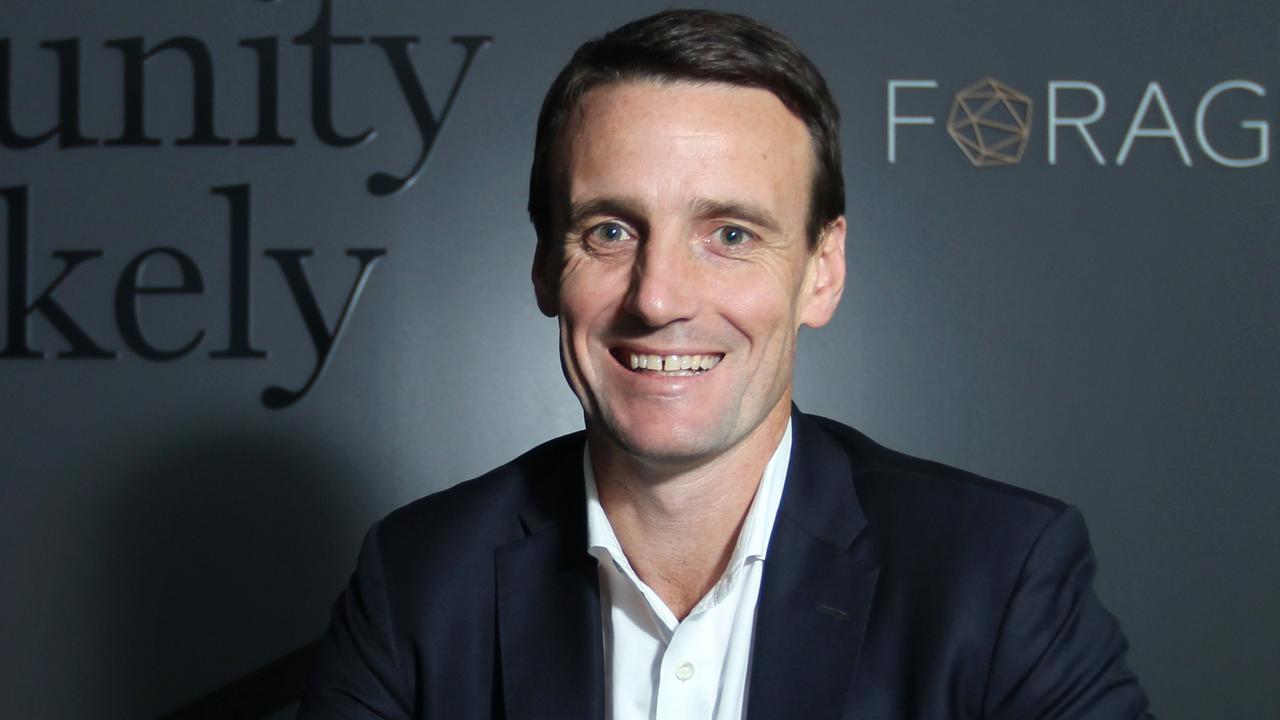Young homeowners most strained, rate stress to rise even if they stay on hold: CBA
Young people that bought their first home during the pandemic and developers or builders are facing the toughest test as interest rates rise, CBA chief Matt Comyn says.

Growing stress among young home loan borrowers and retail and hospitality businesses are just the beginning of a bigger squeeze expected to hit Australian households over coming months, according to big bank bosses.
With just over 60 per cent of the impact of 12 cash rate increases flowing through Australia’s economy so far, the head of Australia’s largest lender expects the delayed hit to household budgets to be increasingly felt, even if the RBA kept rates on hold.
Commonwealth Bank chief executive Matt Comyn told a parliamentary committee hearing that each cash rate increase from here would “put additional pressure” which “I think it’s entirely appropriate… (given) the risks of persistently-high inflation.”
CBA expects the Reserve Bank would have to hike rates 0.25 percentage points just once more this year to control inflation that had peaked in December but remained at “uncomfortable” high levels.
Smaller peers NAB, ANZ and Westpac expect double that hike to a peak cash rate of 4.60 per cent this year.
But even if rates remained unchanged, stress was set to grow, as 85 per cent of the impact of the 4 percentage point increase in rates over the past year made its way through the economy.

“You’ll continue to see more pressure on households over the course of, let’s say, the next six months,” Mr Comyn told the hearing in a hoarse voice via webcast as he fought Covid-19 symptoms.
That would be the case “even if there is no further increase in the cash rate, just simply as more customers are coming off fixed rates, rents are continuing to increase (and) their energy prices continue to go up,” he said.
Westpac executives agreed while echoing comments from executives at NAB and ANZ at the same parliamentary hearing this week, saying the surprisingly strong labour market has meant most customers were coping with higher repayments, but stress was certainly rising.
“The vast majority of our consumer and business customers emerged from Covid in a strong position, as a result, they are showing some resilience to the tighter economic conditions,” Westpac chief executive Peter King told the hearing.
He added however, that the cost of living was a “real challenge” for customers and many families were running down their saving buffers. “We recognise it will get harder from here for some,” he said.
Among business customers, developers and housing construction businesses are by far the most challenged due to the rapid escalation of building materials in the context of fixed-price contracts, the banks said.
Mr Comyn said the industry had been “under enormous stress” for some time, which was one of the reasons CBA expected a shortfall in housing over the next five years.

The banking bosses said the number of customers missing loan repayments had picked up in recent months but was still below historical standards, while higher rental prices were squeezing household budgets.
The greatest financial pressure “outside our mortgage portfolio is actually customers who are renting and so … that will be the biggest driver,” Mr Comyn said.
“That combination of the increase in the cash rate as well as increases in rents, will be feeding that pressure across the board, across sort of two thirds of the population, to varying degrees.”
“Many households are feeling that very directly and even those that are more than comfortably making their repayments on their home loans – they’re definitely experiencing a change in circumstances”
Customers between 30 and 34 years old were already the most stressed, with the least pressure felt by people in the 60 to 64 year old bracket, as they tended to own their home. The biggest reductions in retail and travel consumption were coming in the 25 to 29 year olds.
Lower consumption on discretionary retailers like furniture shops and white goods could be a “prospective problem” said Chris De Bruin, chief executive of consumer & business banking at Westpac.
He said that the duration of higher rates was of more concern than the number of rate increases the RBA still had to make.
“Over time, as discretionary spend from consumers fall, those small and medium sized businesses that are reliant on that discretionary spend to run their business, they will start to struggle,” he said.







To join the conversation, please log in. Don't have an account? Register
Join the conversation, you are commenting as Logout